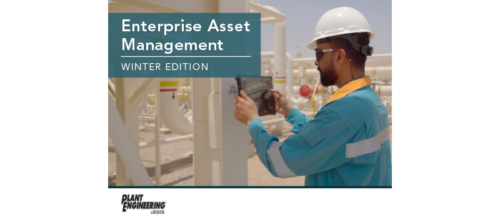Develop a full understanding of riser system health
Digital elements of an asset integrity program described.
The drilling riser on a mobile offshore drilling unit (MODU) features a conduit between the drilling rig and well system that serves a critical role within the system. Typically comprised of a series of connected 75-feet to 90-feet long riser joints, the riser is the main conduit to drill through, connecting to the top of the blow-out preventer (BOP), which is latched to the wellhead and casing system on the seafloor.
It is essential to develop a full understanding of riser system health to ensure that all riser damage and associated risks are captured and quantified accurately based on past loading history and any future loading states.
Annual inspection rotation
Drilling riser joints are typically inspected at five-year intervals. This is usually performed by rotating 20% of the riser joints onshore every year to be dis-assembled and inspected. Many costly and time-consuming boat trips from the MODU to onshore facilities are required for this procedure, in addition to trucking the riser to the inspection facility once onshore. Approximately 20 riser joints from each riser system are transported by boat and one riser per truck to the inspection facility each year, making the logistics of performing a drilling riser joint inspection complex and costly.
However, since the riser system experiences significant wear, erosion, corrosion, fatigue damage and seal damage during operations, this process has long been considered essential for tracking deterioration over time.
Digital elements
Invoking digital elements of a condition-based maintenance and monitoring program are ultimately meant to reduce both operational expenditures and capital expenditures, and to minimize and manage risk with accurate information pertaining to system health.
The elements listed below form an Internet of Things (IoT) eco-system used to manage asset health:
A physics-based digital twin of the asset drives the process. Sensor technology is designed and specified to understand:
- The physical loading of the asset
- The response of the asset.
Data cleaning is used to characterize the asset loading and response measured by the sensors. Inspection techniques are used to create a living digital signature of the asset.
Data science techniques such as artificial intelligence, machine learning, and deep learning are used with the sensor data and physics-based digital twin to characterize future response states from physical loading. The future response states can be verified by inspection.
These elements or resources form the basis of a process that leads to:
- Cost savings
- Risk reduction through understanding of key performance indicators
- Increased performance with additional data analytics.
The process data resides on a dedicated information management system, which supports the user with inventory management data.
Reliability, consistency, accuracy
A condition-based maintenance system which leverages monitoring of riser systems with a laser-based inspection system, has been implemented with a new standard process, which is American Bureau of Shipping (ABS) approved.
The aim is to empower drilling contractors to:
- Reliably determine the condition of drilling riser joints
- Consistently predict when vital components will require service
- Accurately assess remaining component life.
The approach uses a life-cycle condition-based monitoring, maintenance and inspection system that can be deployed on an MODU, enabling resources to be deployed only when necessary. Since drilling riser joints may not be in continual use, it makes sense that maintenance periods should be usage or condition-based instead of calendar-based. The solution consists of performing a baseline inspection on the riser joints to assess their present state; collecting the environmental and operating data when the rig is on- site drilling; and feeding the environmental and operating data into the digital twin.
There is today no alternative technology available that brings together a digital twin of the riser system, onboard riser inspection and load monitoring of the riser to calibrate the digital twin, followed by a determination of actual loading, stresses and fatigue damage over each riser joint. Thus, it accurately assesses remaining life and allows targeted inspection. The technology can be used to predict when riser joints may be susceptible to damage.
Determining stress
The drilling information, metocean conditions and riser data are collected to determine riser joint fatigue damage. The proprietary system determines stress and fatigue at any location in a riser system/wellhead/conductor casing via measurements from several accelerometers and angular rate sensors, placed at strategic locations along the riser, together with analytical riser mode-shape information. Because the only required online inputs are the dynamic riser response, top tension and mud weight, fatigue can be estimated without knowledge of the impinging currents or other forcing events.
Vibration sensors and data-acquisition electronics are housed in the subsea vibration logger (SVDL), which is ABS approved. The data are then processed using patented technology that integrates a computer algorithm to synthesize stress estimates along the entire riser length using a database of riser dynamic modes. The estimates are then processed chronologically via rainflow counting to determine fatigue damage accumulated during a drilling riser campaign, thereby providing actionable information to the drilling crew. The data can also be imported into a 3D viewing system for finite-element analysis.
Detailed measurements are collected, including vessel, metocean, drilling conditions and either real-time or stored load measurements during the drilling operation on the riser system using subsea vibration (SVDL) technology to assess fatigue damage. The sensors are chosen to accurately measure system response. The response process requires specialized data cleaning techniques to ensure that the asset response is characterized and interpreted correctly.
A laser profilometry system is used to collect measurements on the inner diameter of the main bore and axillary lines, between wells to characterize the state of drilling riser joints. In addition, other non-destructive examination (NDE) techniques such as surface NDE, volumetric NDE and wall-thickness measurements are used to assess the health of the drilling riser joint. The SVDL can be installed individually by a ROV on riser joints, wellheads and BOPs in an ‘offline’ mode.
In the offline mode, the recorded vibration data are retrieved after the measurement campaign and then processed offline to estimate stress and fatigue. A semi-analytical method is used to estimate wellhead fatigue damage directly using the measured BOP stack motion data. Analytical transfer functions are used to directly compute stress-time histories and fatigue damage at any location of interest in the drilling riser system.
The offline fatigue monitoring system provides the operator with a useful tool to assess system integrity at any time during a drilling campaign. The semi-analytical method to compute fatigue from measured vibration provides rapid turnaround of raw data to fatigue consumption, enabling informed decisions to be made in adverse conditions.
Physics-based digital twins
Asset integrity management programs are dependent on a combination of labor-intensive inspection, analysis and measured data. A digital twin is a digital replica of the physical asset, in this case the drilling riser system and MODU. This system’s digital representation provides the basis of how the asset responds under various operating conditions. The system digital twin integrates a computer model of the physical system together with response data of the system, and data analytics, to create a living digital simulation of the system as the asset undergoes various operations.
A digital twin model of the global drilling riser and MODU has been developed and can be used to view the fatigue loading of the actual drilling riser joints, as SVDLs collect data, the SVDL data is used to update the digital twin. The digital twin is designed to be an up-to-date and accurate copy of the drilling riser and MODU’s properties and response status.
The digital twin also can be used for monitoring and diagnostics to optimize asset performance and utilization. The sensor data (SVDL, rig response and so fort) can be combined with historical data, human expertise and fleet and simulation learning to optimize performance and improve productivity.
Cost reductions
A drilling contractor deploying this program can expect to experience lower inspection costs, as major inspections are performed according to operating conditions rather than at set time intervals, thus leading to lower OPEX. Since fewer spares are required due to fewer instances of risers being out of service, the drilling contractor’s riser asset management is improved, and CAPEX is reduced.
Lower logistics costs are experienced, with less call for risers being transported back and forth by boat. The reduction in complex logistics proves to be even more critical in remote operations.
Final words
Using a life cycle condition-based maintenance, monitoring and inspection system that can be deployed on the MODU, users remove uncertainties surrounding damage of riser joints. The owner is then able to determine whether a riser should be redeployed or replaced. The system is compatible with all present owners’ maintenance programs and ensures that maintenance requirements are supported with robust engineering. This is the only process that is ABS approved for condition-based monitoring of drilling riser systems.
Original content can be found at Oil and Gas Engineering.
Do you have experience and expertise with the topics mentioned in this content? You should consider contributing to our CFE Media editorial team and getting the recognition you and your company deserve. Click here to start this process.



